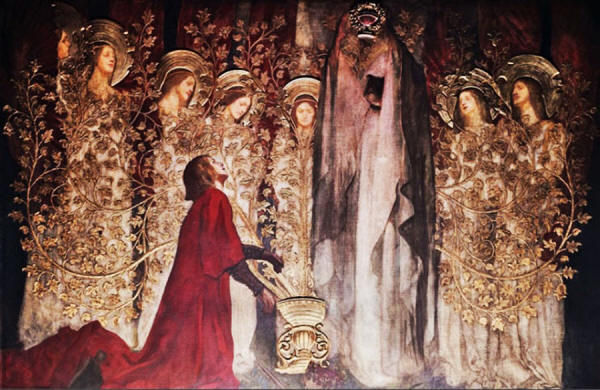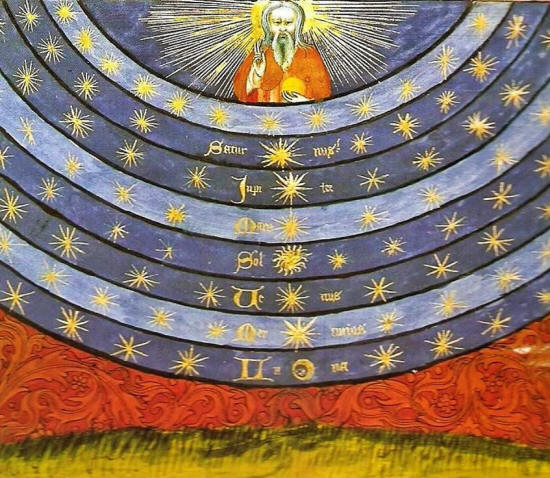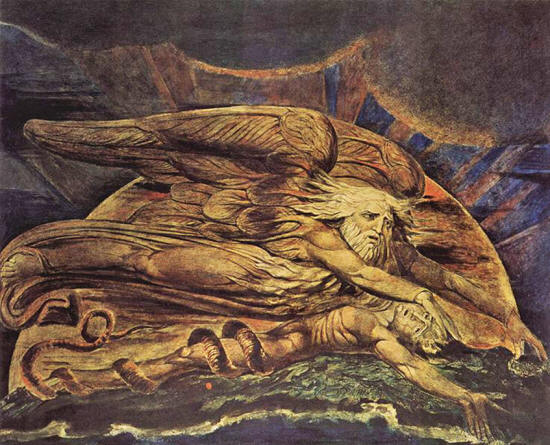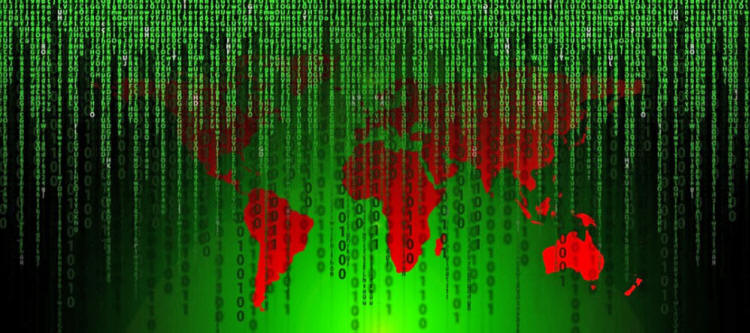|

by Miguel Conner
March 30,
2017
from
GrahamHancock
Website
Spanish version

The Matrix Transformation
A candidate wins the U.S. presidency and a considerable part of the
population rejects the results, embracing exotic stories of
birth certificates or
Russian meddling.
Captains of commerce like Elon Musk
contemplate that humanity might be living in a
simulated reality.
Claims of a flat Earth or
lizard overlords are widely shared on Facebook walls alongside
vacation and children pics. A sense of alienation settles upon a
world population that no longer trusts its,
Being paranoid is
no longer a personality defect but a survival skill,
for many, and every movement seems to grudgingly accept its
conspiracy theory wing like that bombastic uncle at Christmas
dinner.
We are living in Gnostic times...
That's the case I'll be making. Sure, to many the ancient Gnostics
are a historical curiosity, mystic heretics of early Christian times
that lost to those victors who wrote our history.
To others, Gnosticism is
the fuel injection that fires the imagination of occult
organizations and
secret societies still believing
they are secret; or the works of William Blake, Philip K. Dick, and
Philip Pullman, as well as the screenwriting of such modern myths as
The Matrix.
Some academics like
Michael Williams (Rethinking Gnosticism) and Karen King (What is
Gnosticism?) claim it never even existed at all.
The Gnostics existed, though, and their essence is in our midst.
Does that mean the
Gnostic nightmare has finally come true, warned in their
byzantine, protean gospels?
In a way it has, though,
but in a way these times are missing an ingredient that made the
Gnostics so dangerous to world rulers.
First, to understand how
the Gnostic sensibility has partly returned and what is missing,
we'd better get acquainted with Gnosticism.
What is Gnosticism?

Edwin Austin Abbey
The origins of the Gnostics are still debated.
Most academics assume
Gnosticism emerged during the second or third century A.D., although
others presume a much earlier date - perhaps from ancient Jewish,
Mesopotamian, or Egyptian origins.
As April DeConick
argues in The Gnostic New Age, the beginning of Gnosticism is
a straw man since it was never really a religion but a metaphysical
orientation found in many old cultures and drawing from many
traditions that coalesced in nascent Christendom.
This fluidity of
Gnosticism and the fact so few of their works survived has made it
frustrating for both scholars and occultists to understand Gnostic
tenets.
However, the discovery
and study of the
Nag Hammadi codices supply a
clearer picture of the Gnostics - especially when paired with the
latest research from DeConick's book, Dylan Burns (Apocalypse
of the Alien God), and David Brakke (The Gnostics).
Thus, drawing from these scholars and other research, we can deduce
four intrinsic hallmarks of Gnosticism:
-
We do live in,
This simulated
reality is controlled by stellar wardens or cosmic ranchers
that, though
divine perhaps, are
ultimately deficient overseers of a deficient universe.
And, in some
cases, they feed upon our souls (or divine sparks, as some
Gnostics named it) to fuel the cosmos itself.
These stellar
wardens - in some narrative no more than ignorant,
rebellious angels - were typically called
archons
(Greek for "rulers") in Gnostic texts; their leader
was sometimes known as the Demiurge ("Greek" for "public
worker" and often associated with
the Old Testament deity).
-
Our true origin, as
Philip K. Dick
said, is in the stars (or more likely beyond the
stars). i
We have forgotten
our extraterrestrial heritage, most of us suffering from
amnesia through many incarnations of
bad karma software. Our
divine spark belongs to a hitherto unknown and good god
outside the material domains.
How this
separation occurred varies in Gnostic narratives, sometimes
a pre-creation cataclysm to simply a supreme consciousness
wrestling with its self-awareness.
-
To those of us
ready, an awakening occurs to our supernal origins,
typically brought about by the call or teachings of a
transcendent revealer or teacher of righteousness.
This is the
Red Pill or what was known as Gnosis - experiential
knowledge or acquaintance with higher, idealized states of
existence.
Think of Morpheus
courting Neo in The Matrix.
For the ancient
Gnostics, the transcendent revealer took varied forms that
included Jesus, Zoroaster, Mary Magdalene, Seth the third
son of Adam, or the Luciferian goddess Sophia.
The Manichaeans,
a missionary Gnostic sect, placed the Buddha at that lofty
level.
-
Through ecstatic
rituals, the newly awakened beings could take astral flights
beyond the world, bypassing the heavenly realms ruled by the
archons, and commune with aspects of the good god who
resided not in a place but a state of being called the
Eternal Realm, the Treasury of Light, or the Pleroma (Greek
for "fullness").
The goal for the
nascent Gnostic, then, was to become fully angelic,
unrestrained by the forces of fate and flesh. The promise is
elucidated in the Gnostic Gospel of Philip where it says,
"you saw Christ, you became Christ."

Oresme Spheres
It's key to mention that with these four hallmarks, the idea of
self-knowledge weaves throughout them like a gravitational binding.
The journey inward was as
crucial as the journey outward, and could lead to the same place.
As Elaine Pagels
wrote in The Gnostic Gospels,
"Yet to know oneself,
at the deepest level is to know God; this is the secret of
Gnosis." ii
And it's helpful to keep
the self-knowledge theme in mind when approaching any Gnostic work.
As William T. Vollmann
wrote in The New York Times:
"As a corpus, the
(Gnostic) scriptures are nearly incoherent, like a crowd of
sages, mystics and madmen all speaking at once. But always they
call upon us to know ourselves." iii
With that in mind, these
hallmarks can help us define various groups as part of the
historical Gnostic stream, whether it's the,
-
Sethians
-
Hermetics
-
Cathars
-
Mandaeans
-
Yezidi,
...and even forms of
Kabbalah and Sufism.
The hallmarks do not
create an ideal box, though there isn't one for any religion or
philosophy.
Nonetheless, they reveal
the unique, metaphysical orientation that defines a wide and diverse
cultural array of Gnostic groups that exist even today, as with the
Mandaeans and Yezidi.

Elohim Creating Adam,
William
Blake
The four hallmarks certainly work with the definition of other
scholars - for example with the one of preeminent biblical scholar,
Bart Ehrman, in Voices of Gnosticism:
"In the case of
Gnosticism, Gnosis is the very basis of salvation.
One comes to Gnosis
by having it revealed to that person, and through that
revelation is awakened from ignorance, from sleep, or from
drunkenness, which are various metaphors that are used for the
state of the human being before he or she received Gnosis.
Once Gnosis is
revealed to that person and is accepted by that
person, it's ultimately the basis for integration into the world
of the divine from which that person had originated.
One of the essential
features of Gnosis in terms of its content is that the knowledge
that saves is the knowledge that the world in which we live is
not the eternal world and our innermost beings are divine and
consubstantial with a divine being who is beyond the world, and
ultimately is not responsible for its creation." iv
Gnosticism in
a modern context

The Matrix World
Beyond the powerful and radical motifs Gnosticism offers for modern
visual art, as found in films like,
The Truman Show,
Inception, or (again) The Matrix, or in such television series
as The Prisoner or the reboot of Westworld,
...one of the advantages
of Gnosticism is that it can be taken as literal, literally,
spiritually, or psychologically as one wants.
As an illustration,
Carl Jung based much of his depth psychology theories on Gnostic
cosmology, mainly because he saw Gnosticism as a discipline that
efficiently burrowed into the subconscious for therapeutic insights.
In the same stream,
scholar Stevan Davies said:
"The Savior is not a
celestial being brought to earth; the Savior is a capacity of
the mind, and the Savior's journey from above is actually one's
own insight journeying from within." v
Or Gnosticism can be
taken as politically as one wants, whether
alien reptilian rulers or
Deep State
takes the place of the Demiurge and his archons.
To the Gnostic, reality
was negotiable; escape from the constraints of this world was not.
And to those in power throughout history, the Gnostic rabid
suspicion of authority, rejection of earthly systems, denial of
creator gods, and artistic individuality was unacceptable.
They had to go because
they had seen the man behind the curtain and made a run for the hot
air balloon of individuality.
The Gnostics declared all
of reality was "fake news" and alternative facts and a
Mandela Effect.
As DeConick writes in her
book,
"The ideas in Gnostic
scriptures are not innocent. They are not innocuous. Rather,
they are provocative. They involve risk. They call into
question. They stir up and incite." vi
She also writes that,
"the Gnostic
scripture didn't become forbidden scriptures. They were
forbidden scriptures." vii
As can be seen, the
Gnostic attitude has soaked today's culture, in some level or
another.
The game is rigged, the
dice was loaded from the start.
The best we can do is
troll and protest the cosmos and its bad karma software
engineers - go on otherworldly adventures to places where ruling
angels fear to tread to find relief and a sense of wholeness.
The missing
ingredient to today's Gnostic attitude

Red Pill/Blue Pill
Despite today's culture embracing both a mutinous and escapist
attitude, it still misses the mark of the ancient Gnostics.
And despite their
existential cred of alienation bordering on nihilism, the Gnostic
outlook was refreshingly positive and gripped by a fiery joy. Sure,
Gnostic texts like the Secret Book of John or the Gospel of Truth
portray a fallen world of Lovecraftian foes.
However, there is a
rescue operation at all times from higher forces. Everything is
going to be alright if we would just wake up and become Christian
Bodhisattvas as is our right.
Beyond a lack of hope (or you might call it faith), there is still
that one crucial ingredient missing from society today that falls
short of a full-blown Gnostic mindset (and that of other ancient
esoteric movements).
It's best explained by
Philip K. Dick scholar Erik Davies:
"I'd like to suggest
instead that the impulse to transcend - the Neoplatonist's
ascent through the spheres, the Gnostics' sudden awakening, the
desert monk's rejection of the
élan vital - is not simply
a philosophical error or the mark of patriarchy, but is fired by
an intensely lucid yearning of the highest of goals:
liberation." viii
Yes, more than anything
the Gnostics sought freedom - untamed, unapologetic freedom.
That, in truth, is
perhaps why they were considered the greatest of heretics to both
secular and religious authorities:
they wanted a freedom
not stored in any material construct.

Anonymous
A true modern Gnostic would be closer to the Positive Existentialism
or Outsider trope provided by British author Colin Wilson.
As Gary Lachman
wrote in his biography of Wilson, Beyond the Robot:
"The Outsider is
someone who sees 'too deep and too much' and that most of what
he sees is 'chaos.' He or she lives in the world with a sense of
'strangeness' and 'unreality.'
The safe, stable
reality that most of us perceive is for the Outsider an
illusion, a façade obscuring a more dangerous and threatening
possibility:
that of
nothingness, nihilism, and the void, the complete
inconsequentiality of human life and all its achievements.
For the Outsider, the
values and meanings that constitute life for most people - a
good job, a big home, a nice bank account - are empty and
makeshift; they are, at best,
'attempts to
gloss over, to make look civilized and rational something
that is savage, unorganized, irrational.'
He stands for
Reality.
He seeks a meaning
and purpose that the everyday world cannot provide and his
salvation lies in understanding this and embracing it with total
conviction." ix
That would be Gnosticism
in modern times.
That is where Gnostics
throughout the ages found peace, beyond what is imaginable (and
acceptable) to sublime states of unrefined freedom.
As crazy and paranoid as
that may sound (and the Gnostics were regularly accused of these),
it's perhaps the sanest to have… or sometimes the best attitude to
stay sane in these times of negotiable reality.
Maybe we don't live in
Gnostic times, but the psyche of western culture is finally opening
its third eye and catching up with what the Gnostics discovered 2000
years ago.
Like Morpheus tells Neo after he takes the Red Pill, you can almost
hear the voice of ancient heretics telling us,
"Welcome to the
desert of the real."

The Matrix
Bibliography
-
http://thegodabovegod.com/philip-k-dicks-definition-gnosticism/
-
Elaine Pagels -
The Gnostic Gospels (New York: Vintage Books, 1981), p.
xviii-xix.
-
https://www.nytimes.com/2015/04/12/magazine/letter-of-recommendation-the-gnostic-scriptures.html?_r=0
-
Miguel Conner -
Voices of Gnosticism (Dublin, Ireland: Bardic Press, 2010),
p. 74.
-
Stevan Davies -
The Secret Book of John, The Gnostic Gospel (Nashville:
SkyLight Illuminations, 2005), p. xx
-
April DeConick -
The Gnostic New Age (New York: Columbia University Press,
2016), p. 4.
-
Ibid, p. 5.
-
Erik Davis -
Nomad Codes (Berkeley: Yeti, 2010), p. 152.
-
Gary Lachman -
Beyond the Robot (New York: TarcherPerigee, 2016), p. 2-3.
| 








